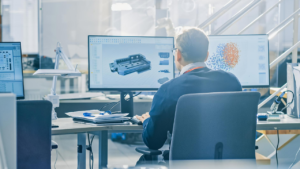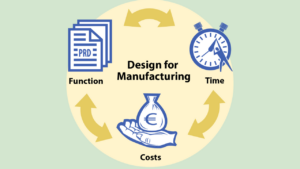In today’s fast-paced world, innovation is the key to staying ahead of the curve, especially in the field of mechanical design. The art and science of mechanical design have evolved significantly, driving the development of cutting-edge products across various industries. In this blog, we’ll delve into the world of mechanical design, exploring how it fosters innovation and contributes to engineering excellence.
Mechanical Design – The Core of Innovation:
Mechanical design is the cornerstone of innovation in engineering. It’s the process of creating functional, efficient, and aesthetically pleasing designs for a wide range of products, from consumer electronics to industrial machinery. Innovative designs can revolutionize industries, improve user experiences, and solve complex engineering challenges.
Precision Engineering through CAD Modeling:
Computer-Aided Design (CAD) modeling plays a pivotal role in modern mechanical design. It enables engineers to create intricate 3D designs with precision and accuracy. CAD modeling allows for rapid prototyping, which expedites product development and reduces the time-to-market.
Applying Design Principles:
Mechanical design relies on fundamental design principles like simplicity, functionality, and manufacturability. Engineers aim to create products that not only work flawlessly but are also easy to produce. These principles ensure that designs are not only innovative but also practical.
Innovation in Product Development:
The role of mechanical design extends beyond the initial concept phase. It guides the entire product development journey, from ideation to production. Engineers continuously seek innovative solutions to optimize designs, reduce costs, and enhance performance.
Meeting User Expectations:
Innovation in mechanical design is closely tied to meeting user expectations. Products must be intuitive, user-friendly, and aesthetically pleasing. Mechanical designers are tasked with striking the perfect balance between form and function.
The Beauty of Precision Engineering:
Precision engineering is a captivating aspect of mechanical design. It involves crafting intricate components with utmost accuracy, leading to high-performance products.
Collaborative Design Process:
Innovation in mechanical design thrives on collaboration. Engineers work closely with cross-functional teams, including industrial designers and manufacturing experts, to bring ideas to life. This collaborative approach fosters innovation through diverse perspectives.
Sustainable Design:
In today’s environmentally conscious world, sustainable design is a driving force in mechanical design innovation. Engineers strive to create products that are energy-efficient, eco-friendly, and have a reduced carbon footprint.
Adapting to Technological Advancements:
Mechanical design is not static; it evolves with technological advancements. Emerging technologies like additive manufacturing (3D printing) and IoT integration are reshaping the landscape of mechanical design, opening doors to new possibilities.
Conclusion:
Innovation in mechanical design is an ever-evolving journey that pushes the boundaries of engineering excellence. As designers and engineers continue to explore new horizons, they redefine what’s possible, transforming ideas into precision-engineered success stories.
In a world where innovation is the lifeblood of progress, mechanical design stands at the forefront, paving the way for a future where functionality meets ingenuity, and precision engineering unlocks endless possibilities.






